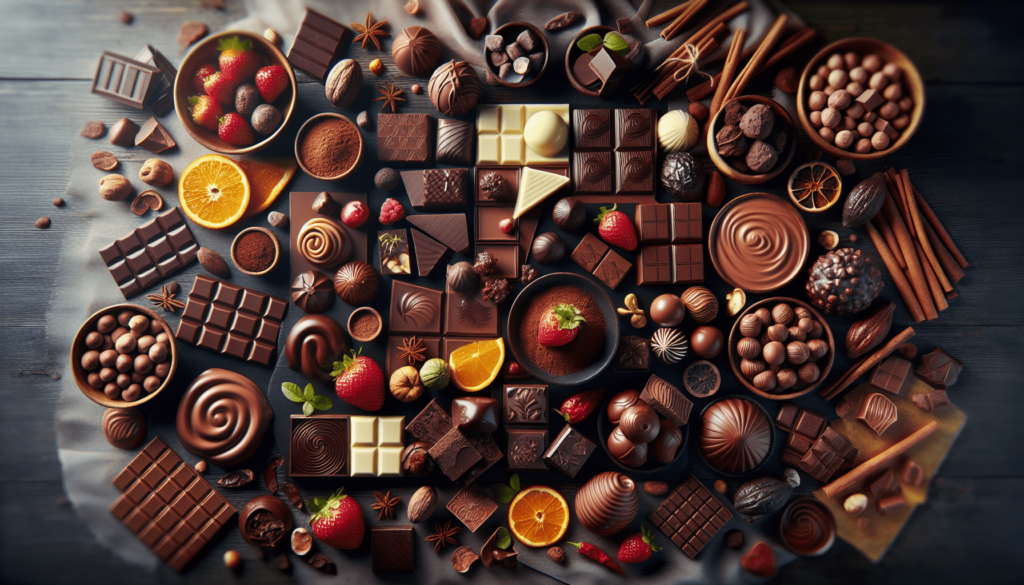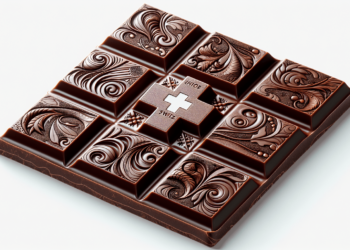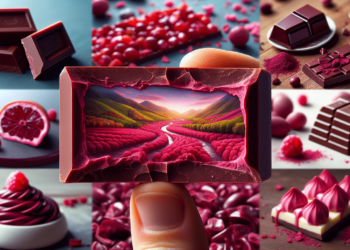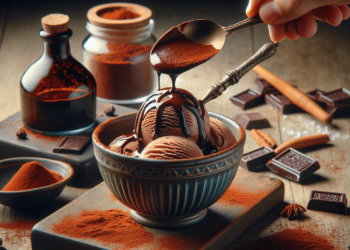Chocolate lovers around the globe have always been captivated by the irresistible indulgence of this delectable treat. But have you ever wondered just how many flavors of chocolate exist in the world? From the smooth and rich taste of dark chocolate to the creamy sweetness of milk chocolate, the variety seems endless. In this article, we will explore the vast array of flavors that tantalize our taste buds, taking you on a mouthwatering journey through the world of chocolate. So grab a snack, sit back, and prepare to be amazed by the incredible diversity of flavors that chocolate has to offer.
Origin and History of Chocolate
Cacao beans and their discovery
The story of chocolate begins with cacao beans, which come from the cacao tree, scientifically known as Theobroma cacao. The cacao tree is native to Central and South America, and it was the ancient Mayans and Aztecs who first discovered the joy and flavor of cacao. The Mayans believed that cacao was a gift from the gods and used the beans to make a bitter drink.
Ancient civilizations and their use of cacao
The ancient civilizations of the Mayans and Aztecs revered cacao and incorporated it into their religious and cultural practices. They saw cacao as a sacred food and used it in rituals, marriage ceremonies, and even as a form of currency. They believed that cacao provided spiritual and medicinal benefits and thought of it as a source of energy and strength.
Introduction of chocolate to Europe
The introduction of chocolate to Europe is credited to Christopher Columbus. On his fourth voyage to the New World in 1502, he encountered cacao beans and brought them back to Spain. However, it wasn’t until the early 17th century that chocolate became popular among the European elite. The Spanish court, in particular, embraced chocolate as a luxury beverage, flavored with sugar, spices, and vanilla.
The Chocolate Making Process
Harvesting and fermentation of cacao beans
The chocolate making process starts with the harvesting of cacao beans. Once ripe, the cacao pods are carefully cut from the trees and the beans inside are extracted. These beans are then left to ferment for several days to enhance their flavor and remove any bitterness. Fermentation is a crucial step in developing the characteristic taste of chocolate.
Roasting and grinding
After fermentation, the cacao beans are roasted to bring out their natural flavors. The roasting process also helps to further reduce the beans’ bitterness. Once roasted, the beans are cracked and ground into a paste known as chocolate liquor or cocoa mass. This paste is what gives chocolate its rich and smooth texture.
Conching and tempering
Next comes the conching process, which involves grinding and heating the chocolate liquor to further refine its texture and flavor. This step can take several hours or even days, depending on the desired outcome. After conching, the chocolate is tempered, which involves carefully heating and cooling the chocolate to give it a shiny appearance and a smooth texture.
Adding flavors and ingredients
Once the chocolate is fully processed, various flavors and ingredients can be added to create different types of chocolate. This can include ingredients such as sugar, milk powder, cocoa butter, and vanilla. The possibilities are endless, and each addition can greatly impact the taste and texture of the final product.

Different Types of Chocolate
Dark chocolate
Dark chocolate is known for its rich and intense flavor. It is made with a high percentage of cocoa solids and minimal added sugar. The bitterness of dark chocolate can vary depending on the cocoa content, with higher percentages resulting in a more intense taste.
Milk chocolate
Milk chocolate is a sweeter and creamier version of chocolate. It contains milk powder or condensed milk, which gives it a smoother texture and milder flavor. Milk chocolate is popular in many types of confections and is often enjoyed by those with a sweet tooth.
White chocolate
White chocolate, although controversial among chocolate connoisseurs, is made from cocoa butter, sugar, and milk solids. It lacks cocoa solids, making it technically not a chocolate in the traditional sense. It has a sweet and creamy flavor and is often used in desserts and baking.
Ruby chocolate
Ruby chocolate is a relatively new addition to the chocolate family. It is made from specially selected cocoa beans that give it a unique pink color and a fruity, slightly sour taste. Ruby chocolate captivates the senses with its visually stunning appearance and distinctive flavor profile.
Blonde chocolate
Blonde chocolate, also known as caramelized white chocolate, is a recent innovation that has gained popularity in the artisan chocolate world. It is made by slowly caramelizing white chocolate to bring out nutty and caramel flavors. Blonde chocolate offers a delightful and sophisticated taste experience.
Flavor Characteristics of Chocolate
Bitterness
Bitterness is an inherent characteristic of chocolate, especially in higher cocoa percentage dark chocolates. This bitterness adds depth and complexity to the flavor profile and is often balanced by sweetness or other ingredients.
Sweetness
Sweetness is a key element in many types of chocolate. It helps to balance out the bitterness and enhances the overall taste. The degree of sweetness can vary depending on the type of chocolate and the amount of sugar added during the manufacturing process.
Creaminess
Creaminess is a desirable texture in chocolate, often associated with milk and white chocolates. It gives the chocolate a smooth and velvety mouthfeel, making it enjoyable to eat.
Fruitiness
Fruitiness can be found in certain types of chocolate, especially those with higher cocoa percentages. It can range from subtle notes of red berries to more pronounced flavors of citrus or tropical fruits.
Nutty flavors
Nutty flavors can be present in chocolate, particularly in milk and dark chocolates. These flavors can range from subtle hints of roasted nuts to more pronounced almond or hazelnut characteristics. Nutty flavors add complexity and richness to the overall taste experience.

Chocolate Varieties by Country
Belgian chocolate
Belgian chocolate is highly regarded for its luxurious and refined taste. It is known for its smooth texture and rich flavor. Belgian chocolatiers are known for their craftsmanship and use of high-quality ingredients.
Swiss chocolate
Swiss chocolate is world-renowned for its exceptional quality and precision. Swiss chocolatiers are known for their attention to detail and dedication to using the finest ingredients. Swiss chocolate is often associated with smoothness and a delicate flavor profile.
French chocolate
French chocolate is known for its elegant and sophisticated taste. French chocolatiers are admired for their artistic creations and innovative flavor combinations. French chocolate is often characterized by its intense and complex flavors.
Mexican chocolate
Mexican chocolate has a long history dating back to the time of the Aztecs. It is known for its rustic and rich flavors, often incorporating ingredients such as cinnamon and chili. Mexican chocolate offers a unique and bold taste experience.
American chocolate
American chocolate has a diverse range of styles and flavors. From mass-produced chocolates to artisanal creations, American chocolatiers are known for their creativity and experimentation. American chocolate can be found in various forms, catering to different tastes and preferences.
Artisan and Specialty Chocolates
Single-origin chocolates
Single-origin chocolates are made from cocoa beans sourced from a specific region or plantation. They showcase the unique flavors and characteristics of the particular origin, allowing chocolate enthusiasts to experience the distinct terroir of different cocoa growing regions.
Bean-to-bar chocolates
Bean-to-bar chocolates are crafted by chocolatiers who are involved in every step of the chocolate making process, from sourcing the cacao beans to the final production. This approach emphasizes quality, transparency, and the connection between the farmer and the consumer.
Flavored chocolates
Flavored chocolates offer a world of creativity and innovation. Chocolatiers experiment with various ingredients and combinations to create exciting flavors such as fruit, spices, nuts, and even herbs. Flavored chocolates provide a new and exciting twist to traditional chocolate.
Organic and fair-trade chocolates
Organic and fair-trade chocolates prioritize ethical and sustainable practices. Organic chocolates are made with cocoa beans that have been cultivated without the use of synthetic pesticides or fertilizers. Fair-trade chocolates ensure that cocoa farmers are paid fair wages for their labor and have access to better working conditions.
Unconventional Chocolate Flavors
Spicy chocolates
Spicy chocolates combine the heat of chili peppers with the richness of chocolate, creating a tantalizing flavor experience. The combination of sweet and spicy is a favorite among adventurous chocolate lovers.
Herb-infused chocolates
Herb-infused chocolates elevate the flavors of chocolate by incorporating herbs such as lavender, rosemary, or basil. These unique combinations add a refreshing and aromatic twist to traditional chocolate.
Alcohol-infused chocolates
Alcohol-infused chocolates offer a delightful indulgence for adults. From liqueur-filled pralines to whisky-infused ganaches, these chocolates provide a luxurious and boozy treat.
Exotic fruit flavors
Exotic fruit flavors can add a tropical and refreshing twist to chocolate. From tangy passion fruit to zesty citrus, the combination of chocolate and exotic fruits creates a harmonious blend of flavors.
Savory chocolates
Savory chocolates challenge the traditional notion of sweetness. From salted caramel to bacon-infused chocolate, these unconventional combinations offer a balance of flavors that surprise and delight the taste buds.
Regional and Cultural Chocolate Variations
Mexican mole chocolate
Mexican mole chocolate combines the rich flavors of chocolate with a complex blend of spices, including cinnamon, chili peppers, and various herbs. This unique combination creates a savory and smoky taste experience.
Italian gianduja
Italian gianduja is a creamy blend of chocolate and hazelnuts. This traditional Italian delicacy is often enjoyed in the form of spreadable chocolate and is widely used in pastries and desserts.
Peruvian lucuma chocolate
Peruvian lucuma chocolate features the sweet and caramel-like flavor of the lucuma fruit. This fruit, native to Peru, gives the chocolate a distinct and tropical taste that is loved by many.
Japanese matcha chocolate
Japanese matcha chocolate combines the earthy and grassy flavors of matcha green tea with the sweetness of chocolate. This unique combination creates a delicate and harmonious flavor profile.
Flavored Chocolate Fillings
Caramel
Caramel-filled chocolates are a classic favorite. The rich and buttery sweetness of caramel complements the chocolate, creating a luscious and indulgent treat.
Nuts
Nut-filled chocolates offer a delightful crunch and added texture. From almonds to hazelnuts, the combination of chocolate and nuts creates a harmonious balance of flavors.
Fruit purees
Fruit puree-filled chocolates provide a burst of fruity freshness. From raspberry to passion fruit, these fillings add a vibrant and tangy element to the chocolate.
Spreads (e.g., peanut butter)
Spread-filled chocolates, such as those filled with creamy peanut butter or hazelnut spread, offer a harmonious blend of flavors and textures. These chocolates are a favorite among those who enjoy the combination of chocolate and nut spreads.
Exploring Unique Chocolate Combinations
Chili and dark chocolate
The combination of chili peppers and dark chocolate creates a unique and tantalizing flavor experience. The heat from the chili pepper enhances the richness of the dark chocolate, resulting in a perfect balance of sweetness and spice.
Sea salt and caramel chocolate
The marriage of sea salt and caramel with chocolate creates a heavenly taste sensation. The saltiness of the sea salt beautifully contrasts with the sweetness of the caramel, elevating the chocolate to new heights of indulgence.
Rose and white chocolate
The delicate and floral notes of rose combined with the sweetness of white chocolate create a luxurious and romantic flavor profile. Rose and white chocolate are a perfect match for those who appreciate a subtle and elegant taste experience.
Earl grey tea and milk chocolate
Earl grey tea and milk chocolate make for a sophisticated and aromatic combination. The bergamot flavor of the tea complements the creamy sweetness of the milk chocolate, resulting in a delightful and fragrant treat.
With such a wide array of flavors, combinations, and cultural variations, chocolate truly offers something for everyone. Whether you prefer traditional flavors or want to explore the unconventional, the world of chocolate is a delight to discover and savor. So, indulge your taste buds, and embark on a chocolaty journey that will leave you craving for more.





